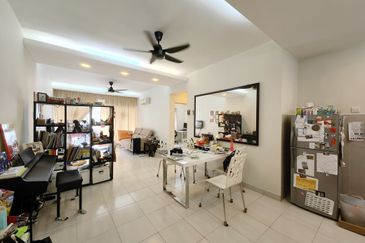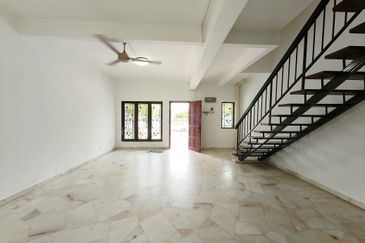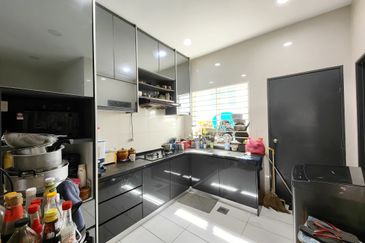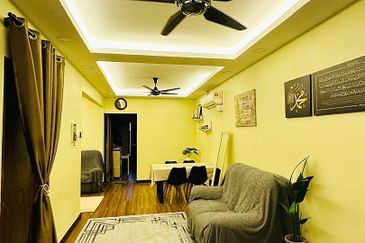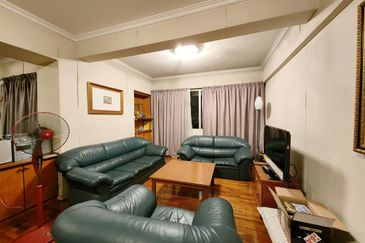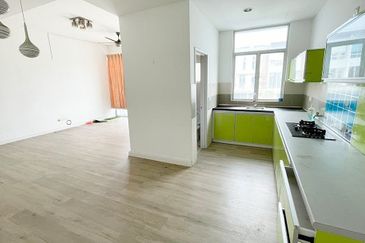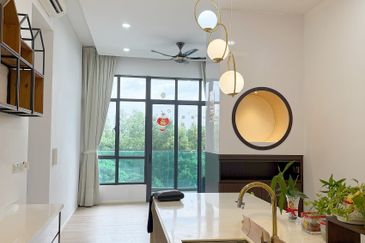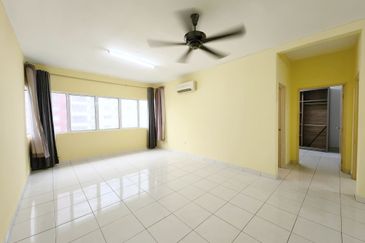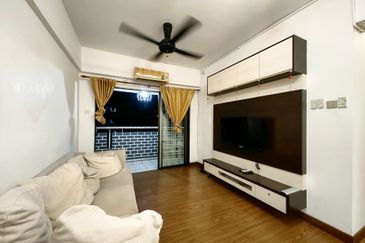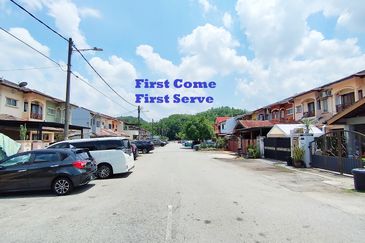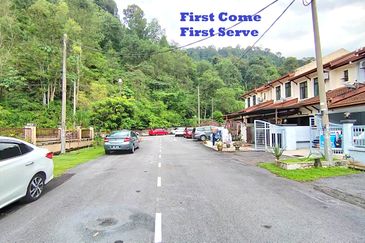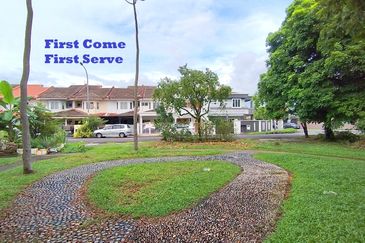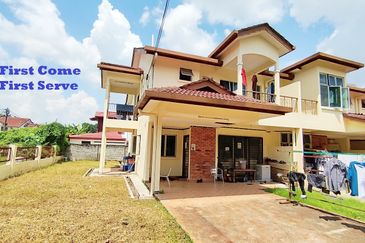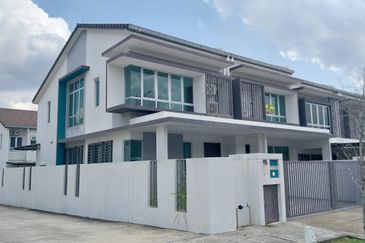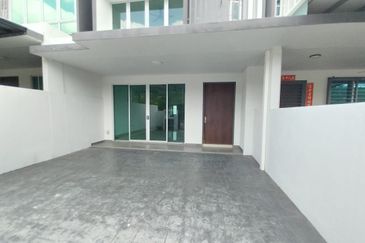
An estimated 6.47 million people live and work in Selangor, which spans 7,931 sq km. For what is indisputably one of the biggest and most vibrant states in Malaysia, ensuring its citizens have a roof over their heads is a challenging task.
“Selangor is the most vibrant and dynamic real estate market in Malaysia, and the state government has been focusing on affordable housing in recent years. In fact, we have been putting a lot of effort into improving the state’s affordable housing policy with aims to achieve a win-win situation for both developers and buyers,” says Selangor Housing and Urban Living Committee chairperson Haniza Mohd Talha, who is also the state assemblywoman for Lembah Jaya.
Once a student of architecture at Sheffield University in the United Kingdom, the 56-year old is well-equipped to lead the state’s Housing and Urban Living Committee, a key unit of the Selangor state government.
Besides handling housing issues in the state, Haniza also wants to improve the overall real estate market and help more people own a home.
Hailing from Ipoh, Perak, she began her political journey in the late 90s, and served as the state assemblywoman for Taman Medan for two terms, starting in 2008. She is also the deputy speaker of the Selangor State Legislative Assembly.
Haniza acknowledges that a number of affordably priced homes are still waiting for buyers, after years of being on the market. Located where land is cheaper, the less-appealing locations resulted in low demand for those particular units..
“Housing and Local Government Minister (KPKT) YB Zuraida Kamaruddin has called for state government support to offer land in urban areas for affordable homes development, but the problem is there isn’t much land left in prime areas,” Haniza says, adding that this is the biggest issue when it comes to developing affordable housing for B40 and M40 groups.
For these groups, houses in urban areas or those close to public transportation hubs would be ideal. However, these areas are usually already developed, or the land is too expensive.
As such, innovative ideas are needed in order to find a balance between maintaining business vibrancy and raising the supply of affordable housing in prime areas.
Revive abandoned projects for affordable housing
One possible solution the state government is considering is the revival of abandoned projects and redevelopment of old areas.
“These are among our top priorities in our efforts to achieve these objectives,” she says.
According to a report by the National Housing Department in June, there are a total of 254 abandoned projects in Peninsular Malaysia with Selangor having accumulated 82, followed by Johor and Negeri Sembilan with 44 and 25 projects, respectively.
Some of these projects are in good locations with a large population and various amenities, and are in the process of being revived with the help of white knights. For instance, the long abandoned Selayang Springs project is in the process of obtaining approval (initiated in August 2017) for redevelopment by KL Northgate Sdn Bhd.
Through the liquidation process, another project, Astana Square in Taman Daya, Kepong, has obtained a Temporary Certificate of Fitness (TCF) from the Selayang Municipal Council under the condition that the owners pay the land premium and additional costs of around RM57,000 per unit.
Haniza notes that if more abandoned projects could be revived, there would be more affordable home choices for those in the B40 and M40 groups who are looking for houses, in areas with job opportunities and easy access to public transportation and amenities.
However, reviving an abandoned project requires 100% approval from owners, the biggest stumbling block when it comes to reviving a project.
“The liquidators usually do not have the complete list of buyers or unit owners of an abandoned project. Finding the buyers could be a big challenge as it might take years to identify and get their permission for redevelopment,” she adds.
In Malaysia, there is no legal provision for en bloc sales of strata properties, only en masse sales which means that any redevelopment or land sale of a strata property will need 100% approval from the owners. This is unlike Singapore, where buildings aged 10 years and above need only 80% of their owners to give the green light.
“We have discussed this issue with KPKT and hope that there will be some amendment to legislations, to facilitate strata property renewal or redevelopment. We hope for some good news soon,” she says.
Redevelop aged areas
Some mature, prime areas in Selangor have existed for decades with hardly any change or upgrade to the area. One could add to, or unlock the value of some of the old properties.
Redevelopment of old areas in Selangor could also stimulate or have a multiplier effect on the commercial sector in these areas.
“Some of these old housing areas in Petaling Jaya, Ampang (Selangor) and Klang are densely populated and need new infrastructure to support future growth. Redevelopment could revitalise these areas and open up new business opportunities, as well as offer new homes for people
who want to stay there,” says Haniza.
For instance, the state government or private sector could optimise land use by building an integrated development with retail, office and residential components which enables the development to generate income to sustain itself while providing affordable homes in an urban area.
However, once again, for any redevelopment to happen, it will require 100% permission from the owners.
“So far, we are reviewing the development proposal of one project in Ampang. There’s another project in Petaling Jaya, where we are seeking approval for redevelopment from owners and waiting for development proposals. We are also looking for land in areas that have passed their liveable period and invite developers to redevelop them,” explains Haniza.
Rumah Selangorku 2.0
In 2014, the Selangor state government launched its affordable housing guidelines for Rumah Selangorku to enable private developers to participate in building affordable homes.
The guidelines have been reviewed following feedback from industry players and consumers and the second version known as Rumah Selangorku 2.0 was introduced in February this year and implemented in April.
Under Rumah Selangorku 2.0, the minimum built-up size for a Rumah Selangorku unit has been reduced to 900 sq ft from 1,000 sq ft, while the allocation of Rumah Selangorku units in a development has been reduced by up to 10%.
With these measures, the state government hopes to achieve cost-savings for developers, thus reducing the price of Rumah Selangorku homes, making them more affordable.
Smart rental scheme
The Selangor state government also has a rent-to-own programme called the Smart Sewa programme to help those who cannot secure end-financing to own a property by providing them houses at reasonable rental rates while helping them to save for the initial cost to own a house.
Introduced in 2017 with an allocation of RM100 million and an additional RM50 million this year, the scheme has enabled the Selangor Housing and Property Board (LHPS) to purchase houses from the open market to be leased to the Smart Sewa eligible participants.
Under the scheme, 30% of the rental paid by the tenant will be set aside and refunded as an incentive for the tenant to buy his or her own home. However, the units they are renting are not for sale and the buyer will need to find another unit.
“The scheme has been like selling ‘goreng pisang panas’. There is a long waiting list for the limited number of 400 units. We would like to increase the units but the state government needs funds to acquire the units. Good houses are not cheap.
“There are developers who come to us to sell their units to be used for the Smart Sewa programme but funding is a problem. Besides, our main objective is to help people own their own home - not buying houses to be rented out,” says Haniza.
Currently, some 400 housing units under the rental scheme are scattered in various housing areas. Rents range between RM450 and RM650 per month. By end-2018, there will be an additional 150 units, and from 2019-2020, another 340 units will be added to the scheme.
The Selangor government, says Haniza, is now working with KPKT to increase the number of units in prime locations to be rented out at a reasonable price to enable the government to cover the maintenance fee, sinking fund and future repairs.
Going forward, Haniza knows the state will need to think out-of-the-box to find alternative ways and means to provide its citizens homes they can afford.
This story first appeared in the EdgeProp.my pullout on Nov 16, 2018. You can access back issues here.
TOP PICKS BY EDGEPROP
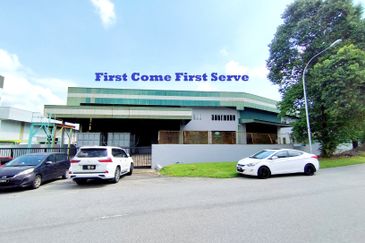
Kawasan Industri Rawang Perdana
Rawang, Selangor
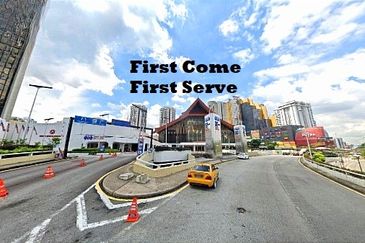
Jalan Chow Kit / Jalan Putra
KL City, Kuala Lumpur
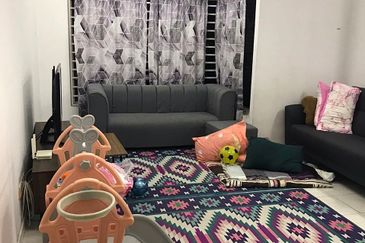
Desa Impiana, Taman Puchong Prima
Puchong, Selangor

Telok Panglima Garang Industrial Zone
Telok Panglima Garang, Selangor
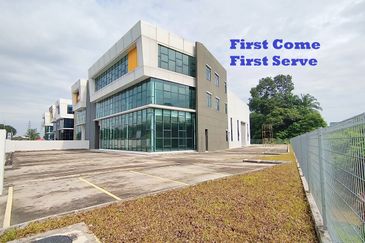
Rawang Integrated Industrial Parks
Rawang, Selangor




